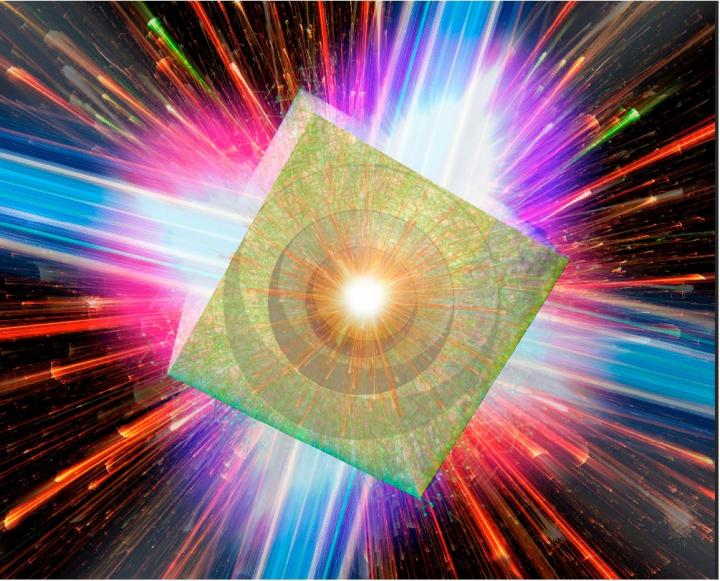Could vacuum physics be revealed by laser-driven microbubble?

Envisioned picture showing all of the main events of microbubble implosion, i.e., laser illumination, hot electron spread, implosion, and proton flash at the end. Credit: M. Murakami
The quest for a better understanding of vacuum physics will lead to the elucidation of fundamental questions in modern physics, which is integral in unravelling the mysteries of space exploration such as the Big Bang.
However, to forcibly separate the virtual pairs using a laser's electric field and cause them to appear not as virtual particles but real particles, the laser intensity required would be ten million times higher than what today's laser technology is capable of.
This field intensity is the so-called “Schwinger limit”, named a half century ago after the American Nobel laureate, Julian Schwinger.
Scientists at Osaka University discovered a novel mechanism which they refer to as microbubble implosion (MBI) in 2018. In MBI, super-high energy hydrogen ions (relativistic protons) are emitted at the moment when bubbles shrink to atomic size through the irradiation of hydrides with micron-sized spherical bubbles by ultraintense, ultrashort laser pulses.
In this study, the group led by Masakatsu Murakami confirmed that during MBI, an ultrahigh electrostatic field close to the Schwinger field could be achieved because micron-sized bubbles embedded in a solid hydride target implode to have nanometer-sized diameters upon ionization.
From the 3D simulations carried out at the Osaka University Institute of Laser Engineering, they also found that the density during the maximum compression of the bubble reaches several hundred thousand to one million times solid density.
At this density, something no larger than a lump sugar would weigh a few hundred kilograms. The energy density at the bubble center was found to be about one million times higher than that at the sun. These astonishing numbers have been thought to be impossible to achieve on Earth. Their research results were published in Physics of Plasmas.
###
About Osaka University
Osaka University was founded in 1931 as one of the seven imperial universities of Japan and now has expanded to one of Japan's leading comprehensive universities. The University has now embarked on open research revolution from a position as Japan's most innovative university and among the most innovative institutions in the world according to Reuters 2015 Top 100 Innovative Universities and the Nature Index Innovation 2017. The university's ability to innovate from the stage of fundamental research through the creation of useful technology with economic impact stems from its broad disciplinary spectrum.
Website: https:/
Media Contact
More Information:
http://dx.doi.org/10.1063/1.5093043All latest news from the category: Physics and Astronomy
This area deals with the fundamental laws and building blocks of nature and how they interact, the properties and the behavior of matter, and research into space and time and their structures.
innovations-report provides in-depth reports and articles on subjects such as astrophysics, laser technologies, nuclear, quantum, particle and solid-state physics, nanotechnologies, planetary research and findings (Mars, Venus) and developments related to the Hubble Telescope.
Newest articles

High-energy-density aqueous battery based on halogen multi-electron transfer
Traditional non-aqueous lithium-ion batteries have a high energy density, but their safety is compromised due to the flammable organic electrolytes they utilize. Aqueous batteries use water as the solvent for…

First-ever combined heart pump and pig kidney transplant
…gives new hope to patient with terminal illness. Surgeons at NYU Langone Health performed the first-ever combined mechanical heart pump and gene-edited pig kidney transplant surgery in a 54-year-old woman…

Biophysics: Testing how well biomarkers work
LMU researchers have developed a method to determine how reliably target proteins can be labeled using super-resolution fluorescence microscopy. Modern microscopy techniques make it possible to examine the inner workings…





















